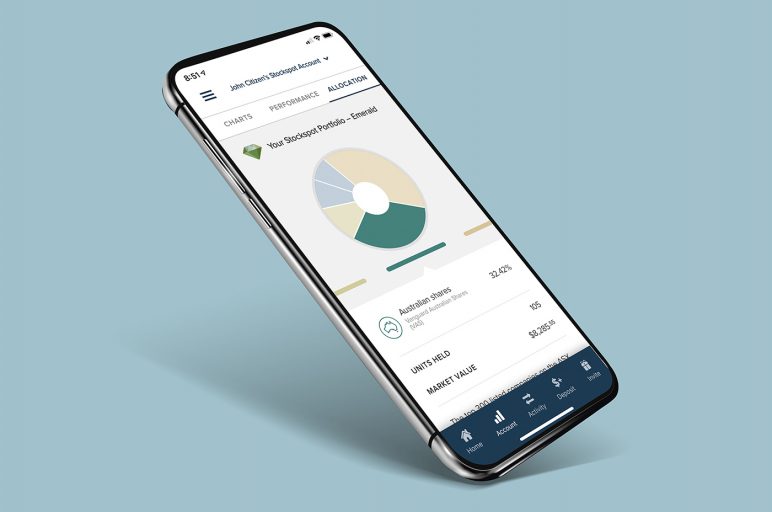If you want to grow your wealth over time, one simple strategy that many investors use is reinvesting dividends.
The strategy of reinvesting dividends involves taking the dividends earned from shares and using them to purchase additional shares of the same investment. Reinvesting your dividends can be a powerful way to help you grow your wealth and investment portfolio over time.
In this article we look at:
- What is a dividend?
- What does reinvesting dividends mean?
- What is the difference between a dividend and a distribution?
- How do I reinvest dividends?
- Benefits of reinvesting dividends
- What is the best way to reinvest dividends?
- When to stop reinvesting dividends?
- Are dividends that are reinvested taxable?
- Conclusion
What is a dividend?
Dividends are payments made by a company to its shareholders, usually in the form of cash, as profits from investing in the company. Some well known Australian companies like Commonwealth Bank, BHP and Telstra pay dividends half yearly. Other companies may pay a special one-off dividend.
What does reinvesting dividends mean?
Quite simply, reinvesting dividends means buying more shares of the same company, with the cash you received as profit from the company, rather than taking the cash as a payout.
By reinvesting , you are essentially increasing your position in the company, by buying more stock with the dividends you receive. Sometimes companies allow you to re-invest at a discount through a Dividend Reinvestment Plan or DRP.
The principal of reinvesting dividends is based on the theory that, by increasing the number of shares in your portfolio, you can take advantage of compound growth and watch your investment grow even more quickly.
What is the difference between a dividend and a distribution?
Dividends and distributions function in similar ways, but with a couple of key differences.
When you own shares, you become a part owner of that company. If that company earns a profit, you may be entitled to something called a dividend.
When you invest in an exchange traded fund (ETF) you benefit from all the companies within that ETF that pay dividends.
A distribution, like a dividend, represents your share of the income earned by the investments held by that ETF.For more on the difference between dividends and distributions, see this blog for a detailed summary.
I also recently explored how DRPs (Dividend Reinvestment Plans) work for ETFs, in a short video, to provide greater context.
Here at Stockspot, instead of investing back into the same ETF dividends come from, we assist in rebalancing underweight assets within your portfolio, by reinvesting dividends into these areas. The benefits of reinvesting dividends in this way are explored in my video.
How do I reinvest dividends?
Practically, dividend reinvesting is a simple process. When a company declares a dividend, you can elect to have the dividend payment reinvested in stock rather than cash. You can do this through a DRP (dividend reinvestment plan) or by purchasing additional shares through your broker.
Financially, reinvesting dividends works by compounding your earnings. Reinvesting dividends effectively earns you more profit and shares, which can lead to exponential growth over time. The longer you reinvest your dividends, the more your returns compound and your investment portfolio grows.
Benefits of reinvesting dividends
People often ask, should I reinvest dividends or not? There are many benefits to reinvesting dividends.
One advantage is that market volatility has less of an impact on your investment portfolio. When the market is down, you can effectively average down your cost basis. This helps reduce your overall risk by purchasing additional shares and smoothing out market volatility. It also helps ensure that you equip your investment portfolio to weather market downturns.
Reinvesting your dividends ensures that your investment dollars are working effectively for you. Utilising the reinvestment method can also helps you remain focussed on your long-term investing goals, avoiding any impulse to make rash decisions based on short-term market fluctuations.
Reinvesting dividends can also save you money on fees, like brokerage costs, by lowering these associated expenses. Fees can quickly add up over time, by reducing your investment fees and avoiding transaction fees for each additional share purchase, you can retain more of your returns.
What is the best way to reinvest dividends?
The main way to reinvest your dividends is by letting your broker and share registry know you would prefer a DRP. Companies use share registries such as Computershare and Link who have online portals where you can change your dividend reinvestment strategy.
Stockspot offers a fully automated dividend reinvest process that invests any funds received from dividends and distributions into your overall portfolio. Rather than invest dividends back into the ETF you received them from, we use distributions to rebalance your portfolio and keep it in line with its target weighting for each asset class. This generally means that we use dividends to buy ETFs that have fallen, giving you an opportunity to benefit from any rebound in their price over time.
When to stop reinvesting dividends?
At times, it might be preferable to stop reinvesting your dividends and instead receive the cash payment.
This could include when you need the money in an emergency. Similarly, those closer to retirement or in retirement might also prefer to receive a regular cash payment instead of focusing on growing their capital.
You might also stop reinvesting your dividends when you want to instead diversify and purchase different stocks rather than increasing your weighting in one company. This is where rebalancing can be a useful strategy.
Each scenario will depend on your individual circumstances. It is best to consult with a tax professional and/or your investment adviser before investing.
Are dividends that are reinvested taxable?
You still pay taxes on reinvested dividends because they are considered taxable income in the year they are earned. Even though dividends are automatically reinvested back into the investment, they are still considered income and are therefore taxed.
If Australian company taxes are already paid by the companies (either within an ETF or by owning the shares outright), then investors don’t need to pay those taxes again at the personal level.
Australian investors receive tax credits, also known as franking credits, which pass down the corporate taxes paid. You can learn more about ETF tax and franking credits here.
Conclusion
Reinvesting dividends is a proven and simple way to grow your wealth and portfolio. To start reinvesting your dividends today, contact your broker or talk to Stockspot to begin your dividend reinvestment plan.







